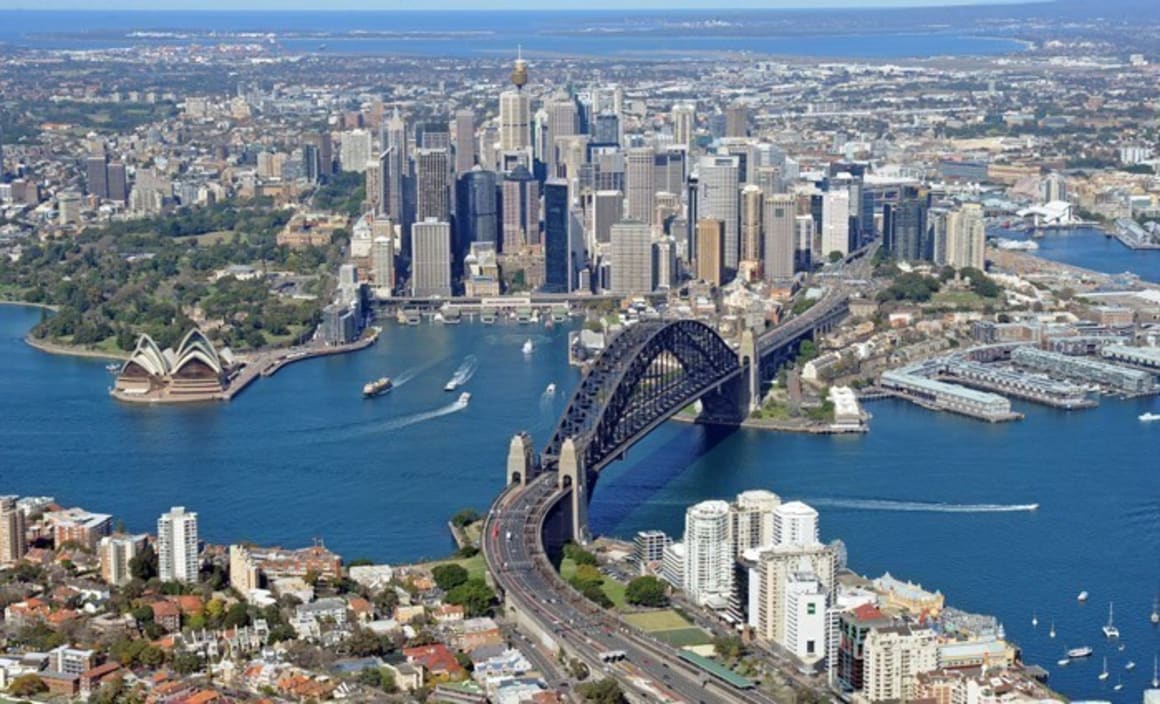Sydney's top fringe suburbs: HTW

Sydney has many fringe suburbs where valuers Herron Todd White suggest there is possible value for money.
Overall the valuers have Sydney has at the start of a decline phase of the property market for both houses and units, according to valuation firm Herron Todd White's May property clock -- a simple broad brush means of suggesting where property prices are and what direction they're headed to.
The capital city was at the same position in April as well.
Here we take a look at 10 Sydney fringe locations as nominated by HTW.
SYDNEY EAST
Double Bay in Sydney’s eastern suburbs, has been revitalised over the past two to three years brought on by a much-needed face lift of the commercial and retail precinct transforming into a vibrant commercial hub.
The recent redevelopment includes new retail shops, Woolworths supermarket and other grocery stores, cafes, restaurants and speciality shops. It also includes the recently completed 2,300 square metre Double Bay Library, giving residents access to state- of-the-art facilities and 442 public parking spaces.
Other major changes include the redevelopment of The Intercontinental Hotel, formerly the Ritz-Carlton and the increased nightlife with various new restaurants, bars and nightclubs which is attracting the younger generation to the area. Night time venues have seen increased crowds since the lockouts in Kings Cross and the CBD which might not be seen as a great result for some, but is still creating a buzz around the area.
Double Bay’s central location with direct access to ferry services and the harbour, Edgecliff train station and new shopping and commercial precincts has brought back to life its reputation. In five to 10 years Double Bay will still be a high demand suburb with potential for more medium density developments to increase its popularity.
As throughout its history, Double Bay isn’t the cheapest place to live with the medium house price being $3,185,500 as at February 2016 up from $2.405 million in December 2012. The average unit price was $1.250 million as at February 2016 up from $765,000 in December 2012 (source: realestate.com. au).
Property Observer looked up some recent sales in Double Bay from www.realestate.com.au around the median prices.
A four-bedroom house at 43 Manning Road Double Bay NSW 2028 sold for $3,250,000.

Among units, a three-bedroom unit at 3/3 Pine Hill Avenue Double Bay NSW 2028 was sold for $1225000, according to RP Data.

Sydney Inner West
Dulwich Hill is a suburb in the inner west of Sydney approximately 7.5 kilometres south-west of the Sydney CBD, which has gone through significant changes over the past few years.
In the 1990s many shops were vacant, but in recent years more shops are tenanted with thriving businesses helping to promote the café culture. Cafés and restaurants have become increasingly popular as the suburb becomes gentrified. Marrickville Council upgraded the shopping strip in the early 2000s, enhancing the look and character of the area. There has been increasing numbers of young professionals moving to the area over recent times due to its close proximity to the already gentrified areas of Newtown, Enmore and Erskineville. Dulwich Hill has also been boosted by the recent introduction of light rail.
The proposed Sydenham to Bankstown Urban Renewal Corridor will see the introduction of a 20-year-plan to provide thousands of new dwellings along the current rail corridor and peak hour trains to the city every four minutes. Re-zoning will allow many medium-rise complexes and shop-tops within close proximity of the rail corridor including in the suburbs of Dulwich Hill, Marrickville and Hurlstone Park. Current parks and open spaces are proposed to be improved as well as enhancements to walking and cycling tracks.
Dulwich Hill’s medium house price was $1.348 million as at February 2016, up from $850,000 in December 2012. The average unit price was $650,000 as at February 2016, up from $477,750 in December 2012 (source: realestate.com.au).
Sydney Inner South
The inner south area of Sydney in a line from Botany through to Waterloo has seen the transformation of a number of old run down industrial neighbourhoods into modern high density residential neighbourhoods. Suburbs such as Botany, Mascot, Rosebery, Beaconsfield, Zetland, Alexandria, Erskineville and Waterloo have also seen a significant number of large residential unit complexes constructed over the past ten to 15 years. This is set to continue with the precincts around Mascot and particularly Green Square railway stations to undergo significant retail and residential development over the coming decade.
Green Square is approximately 3.5 kilometres from the city centre and four kilometres from the airport and the development of this precinct will take it from its industrial past to a new style of high density living linked to shops, parks, gardens, entertainment and bike and walking routes. At the heart of the Green Square development is the new town centre, a major new residential, retail and cultural hub along with improved infrastructure and community facilities including a new library and plaza, aquatic centre, parks and open spaces, public art, a child care centre and community creative hub. It will eventually have 30,500 new dwellings including about 10,000 now under construction (source: www.cityofsydney.nsw. gov.au).
As discussed the bywords for many of these inner suburbs have been lifestyle options with a café culture. As buyer profiles have changed and medium density options fit both the purse strings and location options, the appeal of an inner suburb unit close to transport with minimal maintenance appears to be a primary driver for the regentrification of many suburbs. Given this change we do not see the appeal of these suburbs lessening over time.